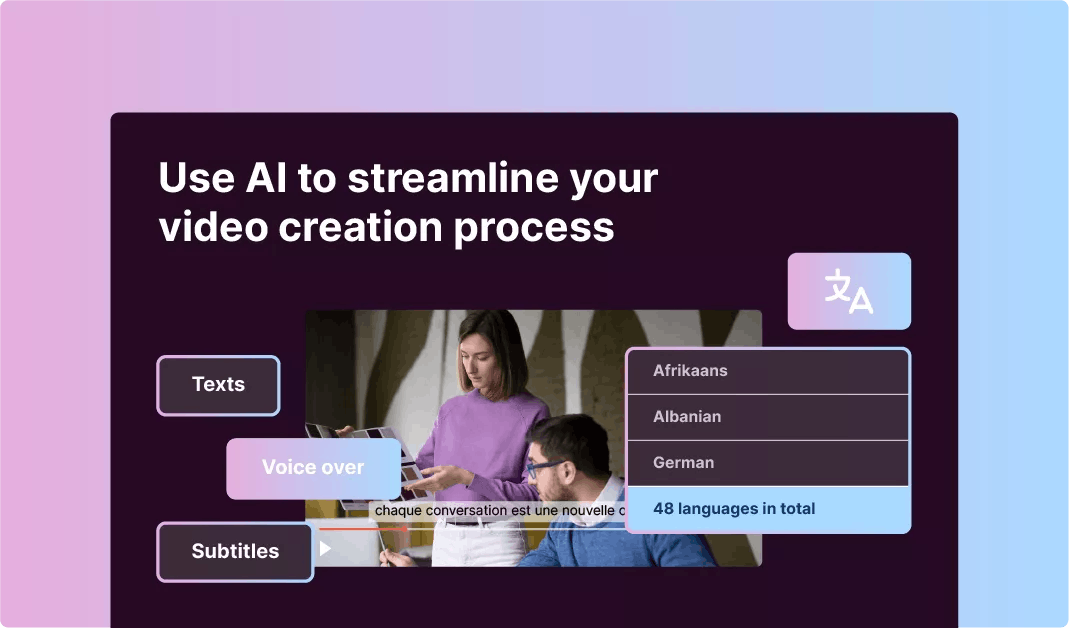Digital Transformation: How To Engage Your Team

According to a study from 2015 – yes, that early! – companies with the highest level of digital maturity were 26% more profitable than others and had a 12% higher valuation in financial markets compared to their counterparts (in La transformation digitale des entreprises, les bonnes pratiques, Eyrolles, 2015). That is to say, company performance and competitiveness relies on their digital transition. The digital transition specifically involves three challenges: digitising company departments, exploiting data in all departments and establishing a new customerfocused business approach.
Provide employees with all the keys to adopting new work methods
This company digitisation requires adopting innovations and new technologies. To promote their adoption, it’s essential to involve all of your project stakeholders, identify important in-house sponsors, and train ambassadors.
The goal is to provide all the keys for your teams to use these new tools. Change
management in companies must be carried out with an appropriate method and
training, otherwise it’s impossible to overcome resistance to change.
Communicate to engage your teams/employees
Especially during the initial phase, internal communication is a key element for the success
of your project. All employees concerned must be informed. The greatest resistance is often the result of rumours and a lack of information. Transparency is essential. The more information is made easily available, the less resistance there will be. The ideal situation would be to involve all of your employees and invite them to participate in the change rather than be subjected to it. It’s also important for your employees to feel supported and assisted, not constrained or even cast aside during the process.
In addition, your goals will be more easily shared and accepted if you communicate a clear vision, which will ensure a smooth transition.
Finally, without overdoing it with the storytelling, it’s important that you communicate on the emergency situation in the company.
An emergency situation refers to a context that implies and legitimises a rapid change in an organisation or process. Such an emergency situation warrants change and transformation. This notion of urgency must be communicated at the beginning of your project.
Overcome resistance by coherent, controlled communication
To support your employees during transformations and handle emerging resistance, it’s necessary to engage the line management, which will be the backbone of the project’s implementation. The line management will communicate and implement the new solution and new processes. In other words, as a digital project manager, you usually have a network with which you set up test systems to obtain feedback on communication to effect change and create new uses. Whether you hire a consulting firm and/or engage internal resources, adopting innovation often involves the same steps:
- 1 An update of digital business solutions according to the size
and positioning of your company; - 2 An audit to determine whether employees and service providers are ready
to embark on this transformation; - 3 The framing and sizing of the project;
- 4 A subsequent test phase and its analysis before expanding implementation to the desired scope;
- 5 A general kick-off of the solution;
- 6 An adaptation/expansion phase with an analysis of the feedback and celebration of initial success;
- 7 Continuation of the project by providing the employees with relevant communication and training content aimed at full adoption.
Each of these steps requires specific communication. Your team responsible for change management must clearly define the communication goals, as well as the actions and tools to be put in place to ensure the success of the process. It must thus correlate the project phases with the following communication objectives:
– emergency situation (why change);
-situation of adoption (benefits to users/business sectors);
-situation of expansion to other business units or other functions.
The conclusion is clear: proper communication is essential to change management. This strategy must involve the following crucial steps: raising awareness among the teams involved, deploying the solution and, finally, adopting long-term change. The entire strategy is based on the use of a communication mix in which video plays a central role.
Resources













